When the temperature rises, what we eat can either energize us or make us feel sluggish. Light, refreshing salads are perfect companions for hot days, providing hydration and nutrients without overloading our digestive systems.
On the flip side, some salads that seem healthy can actually be calorie bombs that leave us feeling heavy and tired. Let’s explore which salads to embrace during warm weather and which ones might be better saved for cooler days.
1. Watermelon, Feta & Mint Salad
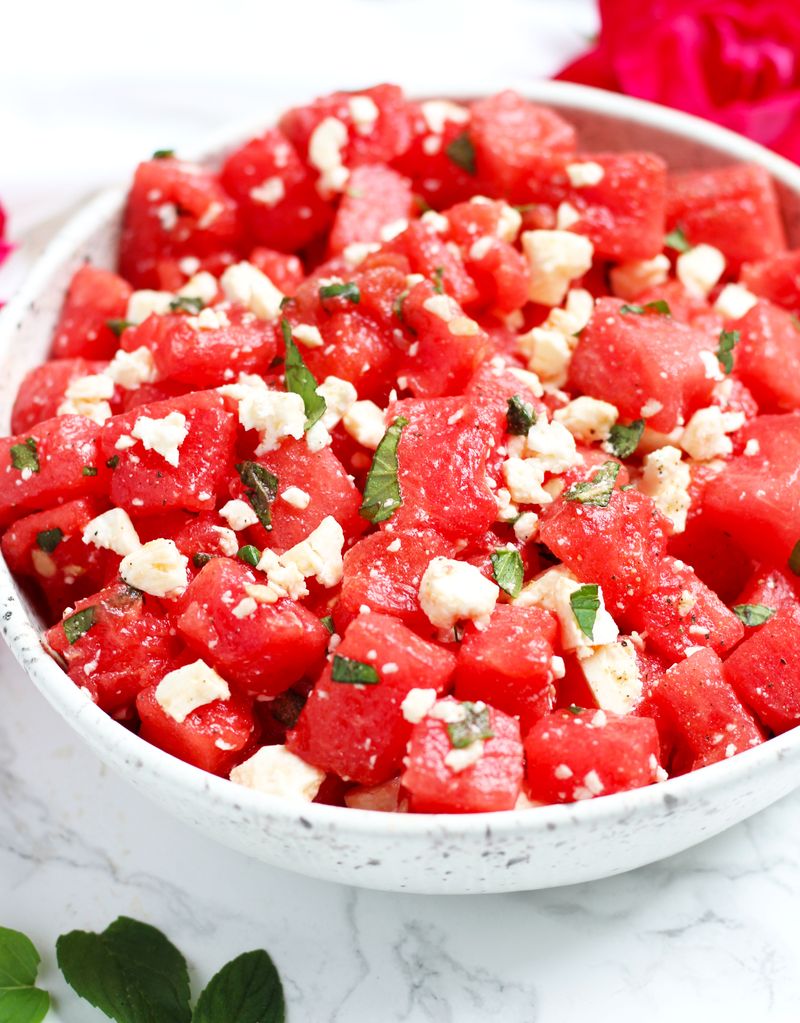
Juicy watermelon chunks create the perfect summer refreshment when paired with tangy feta cheese and bright mint leaves. The combination offers a delightful contrast between sweet and salty flavors that dance on your taste buds.
The high water content in watermelon (about 92%) makes this salad incredibly hydrating when temperatures soar. Plus, it requires minimal prep—just chop, crumble, and toss! A light drizzle of olive oil and a squeeze of lime juice finish this dish perfectly.
The entire salad clocks in at under 200 calories per serving while still providing satisfying textures and vibrant flavors without weighing you down.
2. Cucumber & Avocado Salad with Dill Yogurt Dressing
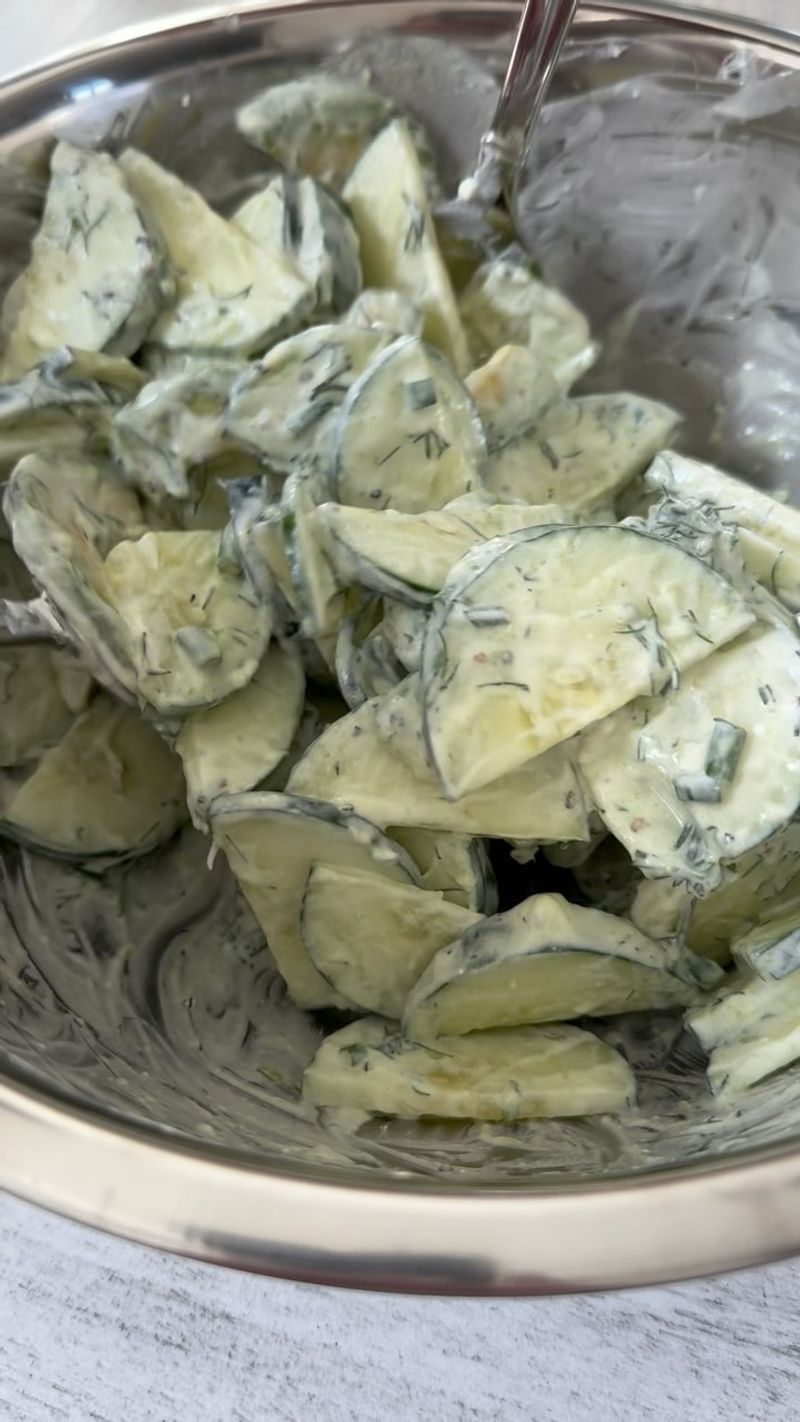
Cool cucumbers deliver crunch and hydration while creamy avocado adds healthy fats that satisfy without heaviness. The contrast in textures makes each bite interesting while keeping the overall feel light and refreshing.
The dill yogurt dressing brings tangy brightness without the heaviness of mayo-based options. Greek yogurt provides protein while keeping the dressing light and smooth—perfect for hot days when rich dressings feel overwhelming.
This salad stays crisp for hours, making it ideal for picnics or outdoor gatherings. The combination of green vegetables with herbs creates a cooling effect that’s especially welcome when the mercury rises above 80 degrees.
3. Citrus & Arugula Salad with Toasted Almonds
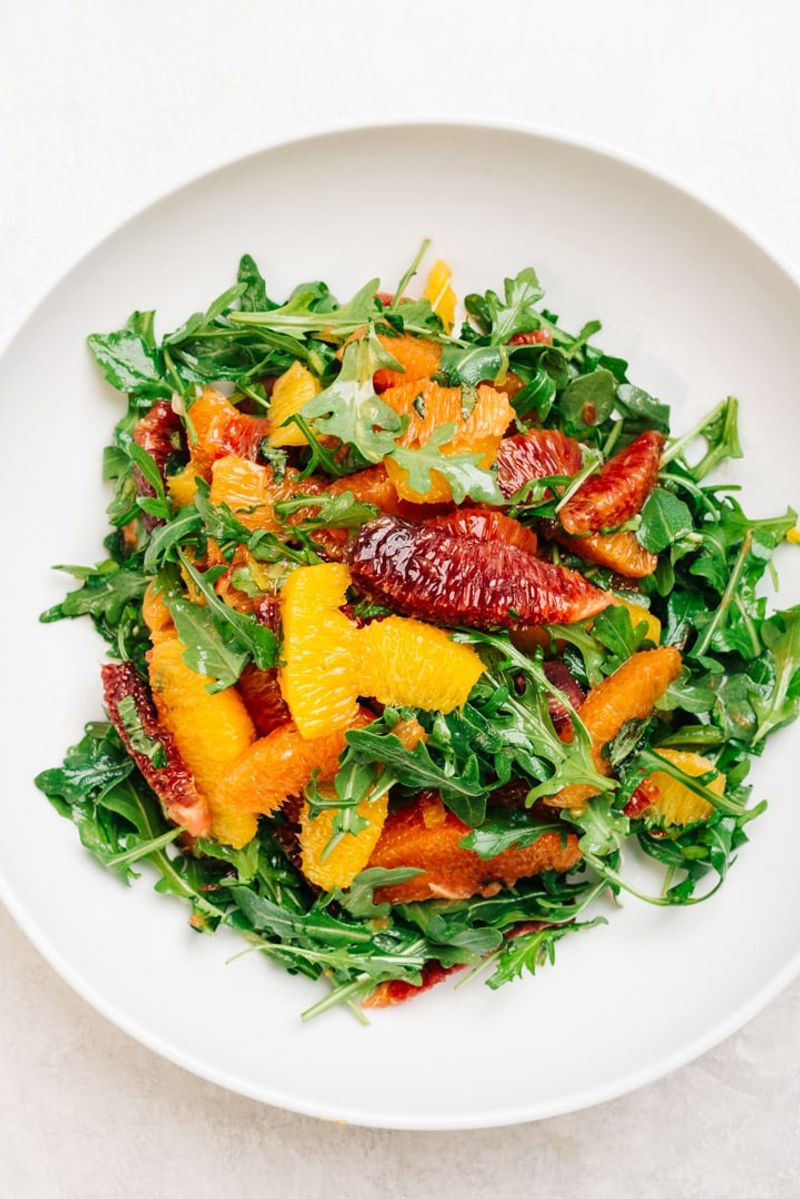
Bright segments of orange and grapefruit add juicy bursts of vitamin C to peppery arugula leaves in this vibrant summer salad. The citrus not only refreshes but also helps your body absorb iron from the greens—a nutritional power combo.
Toasted almonds contribute satisfying crunch and protein without the heaviness of cheese or meat toppings. A light vinaigrette made with citrus juice keeps everything fresh and zingy, while a touch of honey balances any tartness.
This salad assembles in minutes yet delivers complex flavors. The entire dish provides sustained energy through natural sugars and healthy fats rather than weighing you down with dense ingredients that require more digestive effort.
4. Chilled Noodle Salad with Sesame-Ginger Dressing

Cold noodles deliver satisfying texture while remaining remarkably light, especially when paired with crisp vegetables like bell peppers, carrots, and snap peas. The temperature contrast makes this dish particularly refreshing when eaten outdoors.
The sesame-ginger dressing brings zippy Asian flavors without heavy oils or cream. Rice vinegar provides tang while a touch of honey balances the acidity—creating a dressing that coats without weighing down each bite.
Make this ahead and chill thoroughly for the best flavor development. The noodles absorb just enough dressing to become flavorful but remain distinct and slurpable. Unlike hot pasta dishes, this chilled version energizes rather than induces afternoon sleepiness.
5. Grilled Peach & Burrata Salad
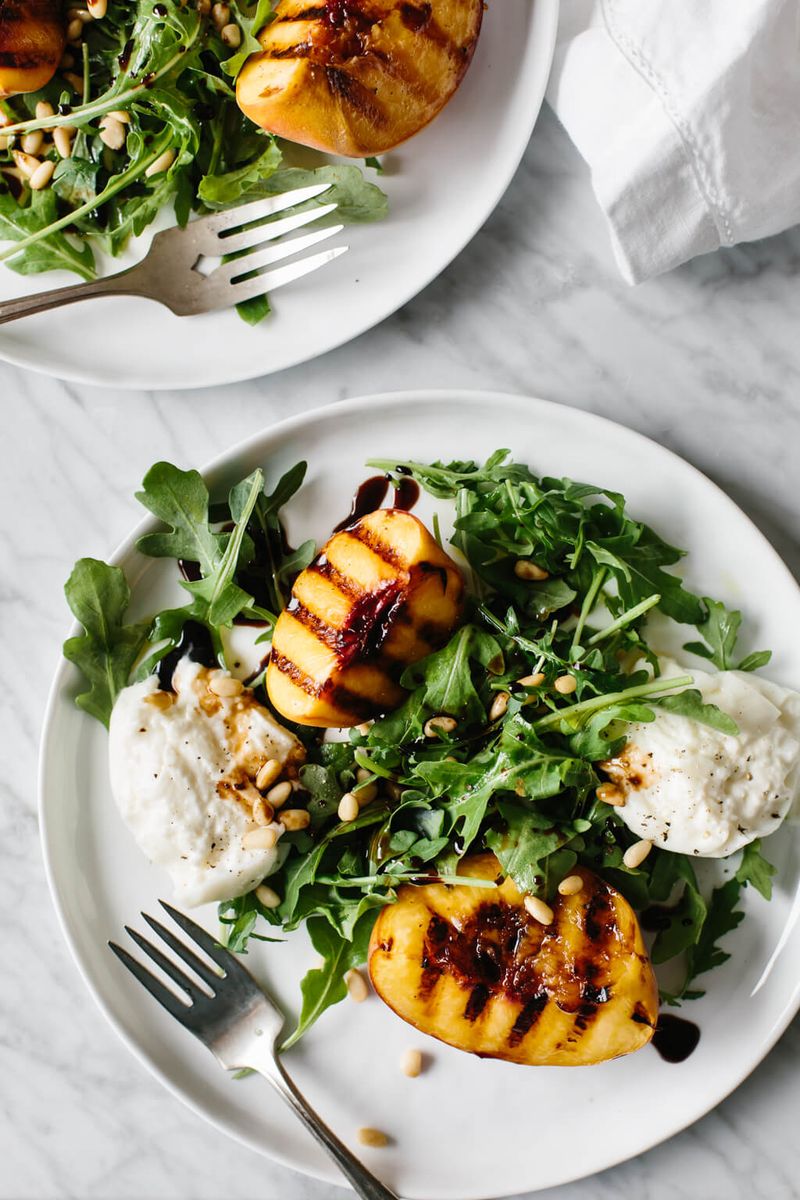
Grilling peaches caramelizes their natural sugars, creating sweet depth that pairs beautifully with creamy burrata cheese. The warm fruit against cool cheese creates a temperature contrast that feels indulgent yet surprisingly light.
Fresh arugula or mixed greens provide a peppery base that cuts through the sweetness. A simple balsamic glaze adds acidity without heaviness, while the minimal ingredient list lets each component shine.
This elegant salad offers the satisfaction of dessert flavors in a main dish format. The protein from the cheese provides staying power, yet the fruit-forward approach keeps it appropriate for even the hottest days when appetites naturally decrease but hydration needs increase.
Now, let’s talk about the ones that don’t bring the sunshine.
1. Heavy Potato Salad with Mayo

Traditional potato salad might seem like picnic perfection, but those mayo-drenched spuds create a digestive challenge in high heat. The combination of starchy potatoes and egg-based mayonnaise creates a calorie-dense dish that sits heavily in your stomach.
The mayonnaise also poses food safety concerns when left unrefrigerated at outdoor gatherings. Bacteria multiply rapidly in this protein-rich environment when temperatures climb above 70 degrees—adding health risk to the heaviness factor.
A typical serving packs around 400 calories, mostly from fats and carbs. The creamy coating also dulls the palate rather than refreshing it. Save this comfort food classic for cooler weather when your body naturally craves more substantial fare.
2. Creamy Caesar Salad with Fried Toppings
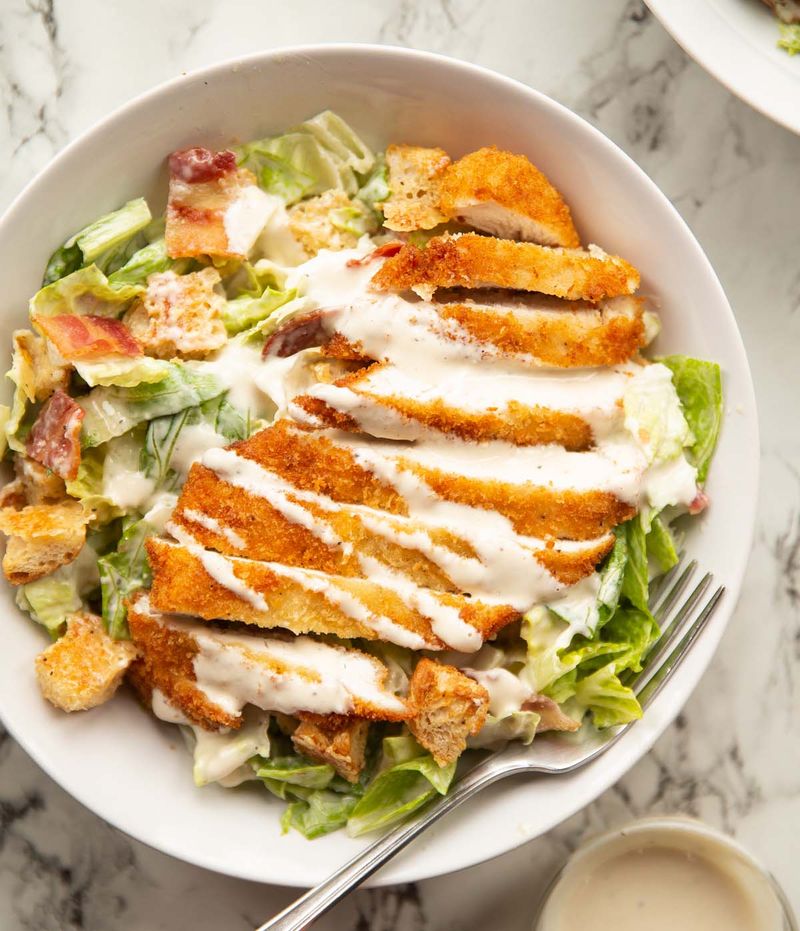
Caesar salad often masquerades as light fare while secretly delivering substantial calories through its rich dressing and toppings. The traditional egg-based dressing contains significant oil and sometimes anchovy paste—creating a heavy coating on each romaine leaf.
Fried croutons add another layer of heaviness through oil absorption during cooking. Some versions include additional fried elements like crispy chicken or bacon that further increase the calorie and fat content while reducing the refreshment factor.
Parmesan cheese contributes additional richness and sodium that can leave you feeling bloated. A restaurant portion frequently exceeds 600 calories—closer to a main dish than a light starter—making it a poor choice for hot weather when your digestion naturally slows.
3. Beet & Goat Cheese with Roasted Nuts
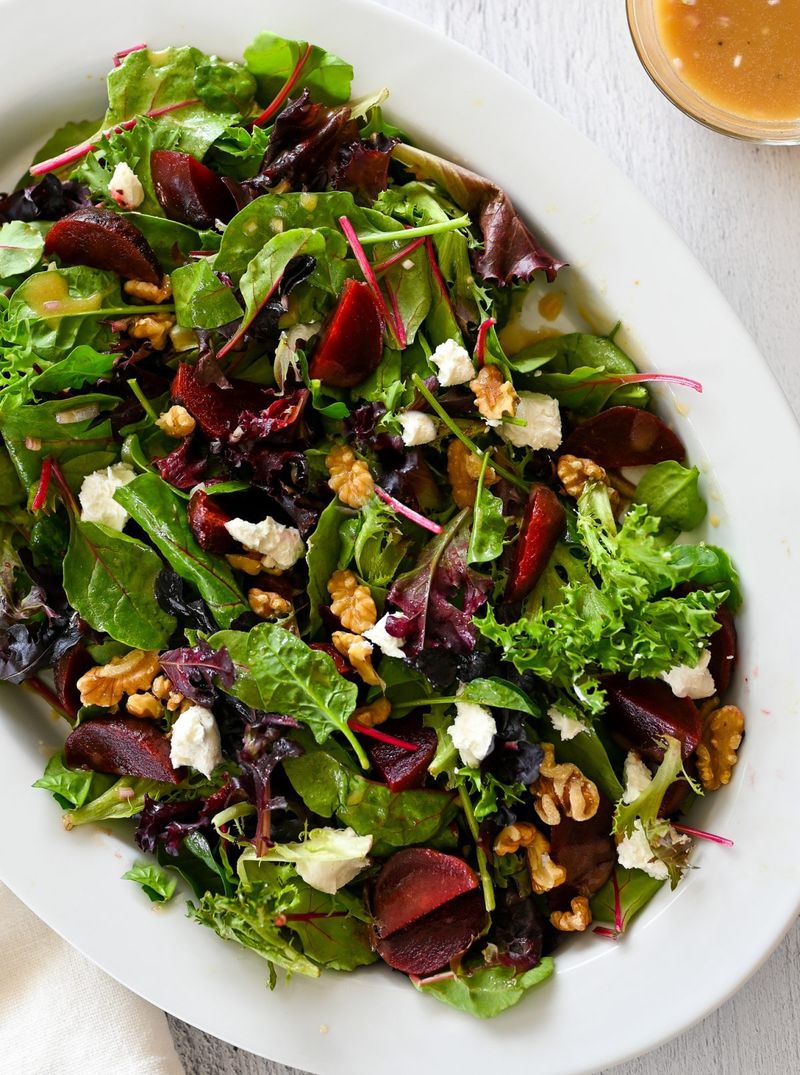
Earthy roasted beets bring natural sweetness and vibrant color but also significant density to this popular salad. Their high sugar content and substantial texture make them more filling than water-rich vegetables ideal for hot weather.
Goat cheese adds creamy richness that, while delicious, contributes heaviness through its fat content. The combination creates a substantial mouthfeel that satisfies during cooler seasons but can feel overwhelming when temperatures rise.
Roasted nuts further increase the calorie density through healthy but concentrated fats. While nutritionally valuable, this trio of ingredients creates a salad that demands more digestive energy—energy your body might prefer to use for cooling rather than processing dense foods during hot weather months.
4. Pasta Salad with Deli Meats and Cheddar
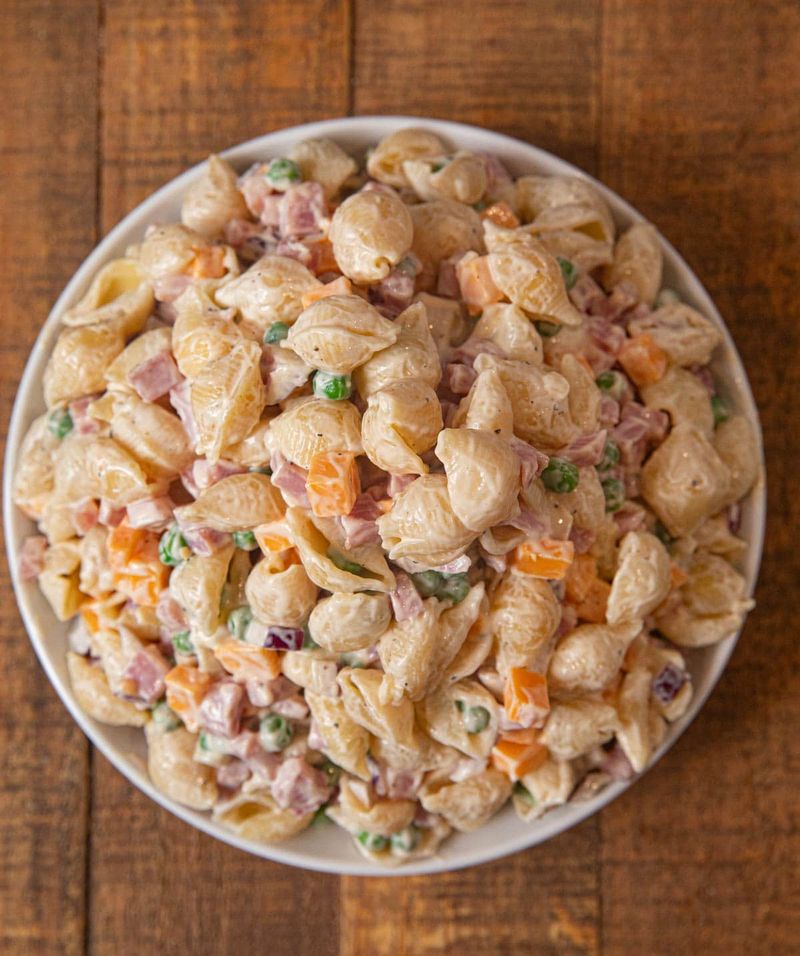
Pasta creates a carb-heavy base that absorbs dressing while contributing substantial density. Unlike vegetable-based salads, pasta provides little water content or natural refreshment, making it sit heavily during warm weather.
Deli meats add sodium and preserved proteins that can increase thirst and bloating—counterproductive effects when hydration matters most. The cheddar cheese compounds this issue while adding significant fat content that slows digestion.
Typically dressed with mayonnaise or oil-based options, this salad category rarely offers the light, acidic balance that summer appetites crave. The combination resembles a sandwich in salad form—complete with all the heaviness but missing the refreshment factor that makes ideal warm-weather foods so satisfying.
5. Quinoa Salad with Roasted Root Veggies
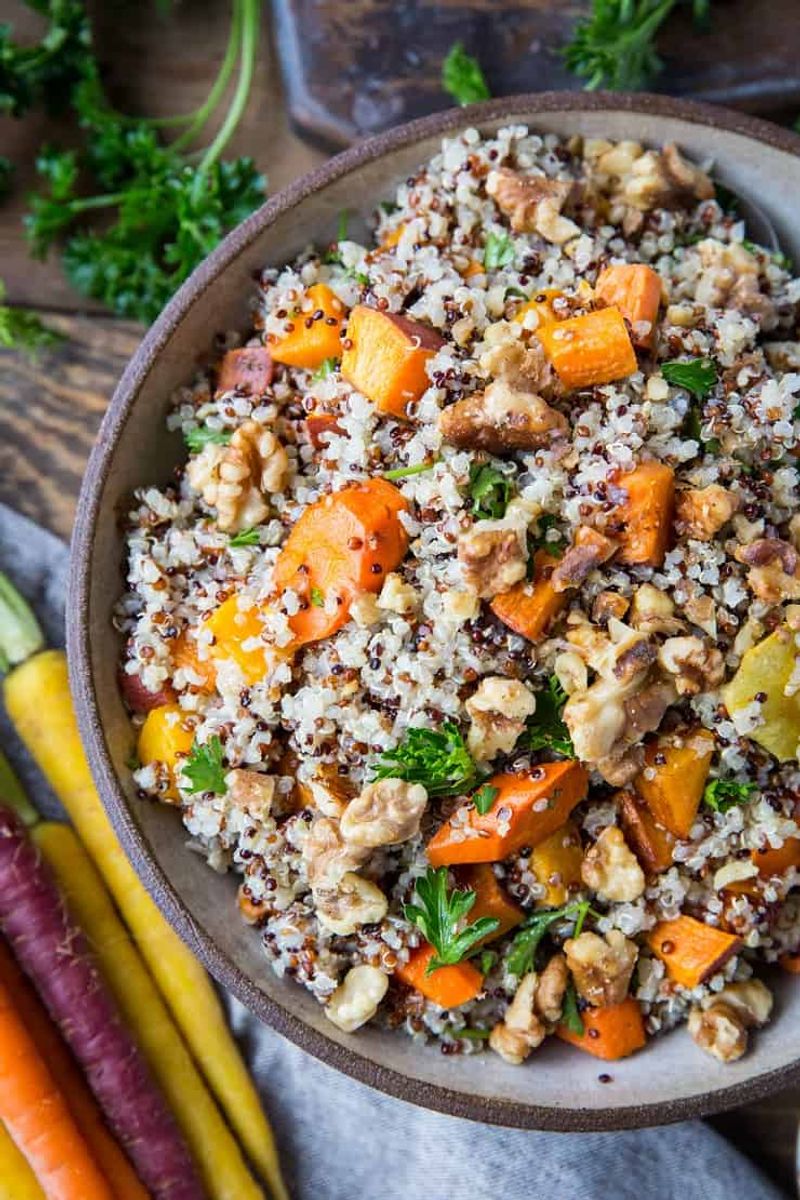
Quinoa provides excellent nutrition but creates a dense base that absorbs rather than refreshes. Combined with roasted root vegetables like carrots, parsnips, and sweet potatoes, this salad category becomes substantially hearty rather than cooling.
The roasting process concentrates vegetable sugars and removes water content—exactly the opposite of what makes summer salads refreshing. Root vegetables also require more digestive energy to process compared to their above-ground counterparts.
While perfect for transition seasons like fall, this combination can feel too grounding during peak heat. The earthy flavors and substantial textures signal comfort food rather than refreshment to your body. Save this nutritional powerhouse for days when temperatures drop below 75 degrees for maximum enjoyment.
Leave a comment